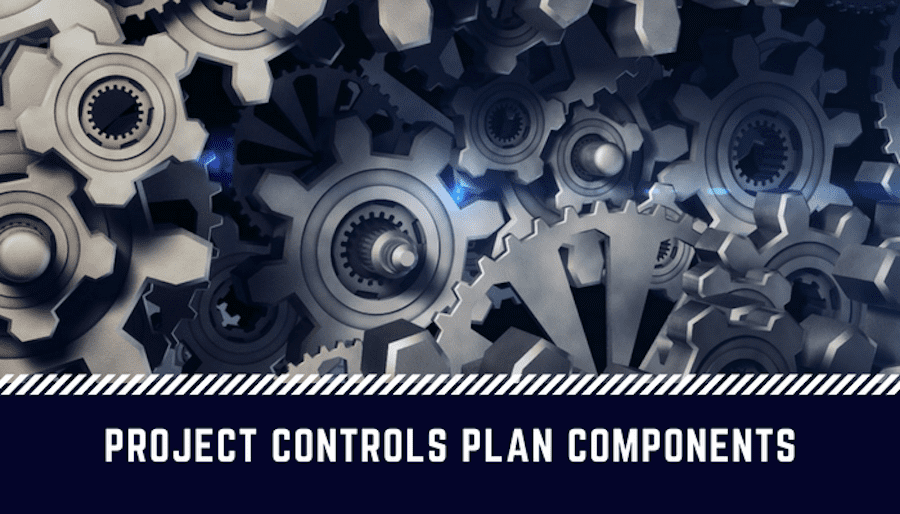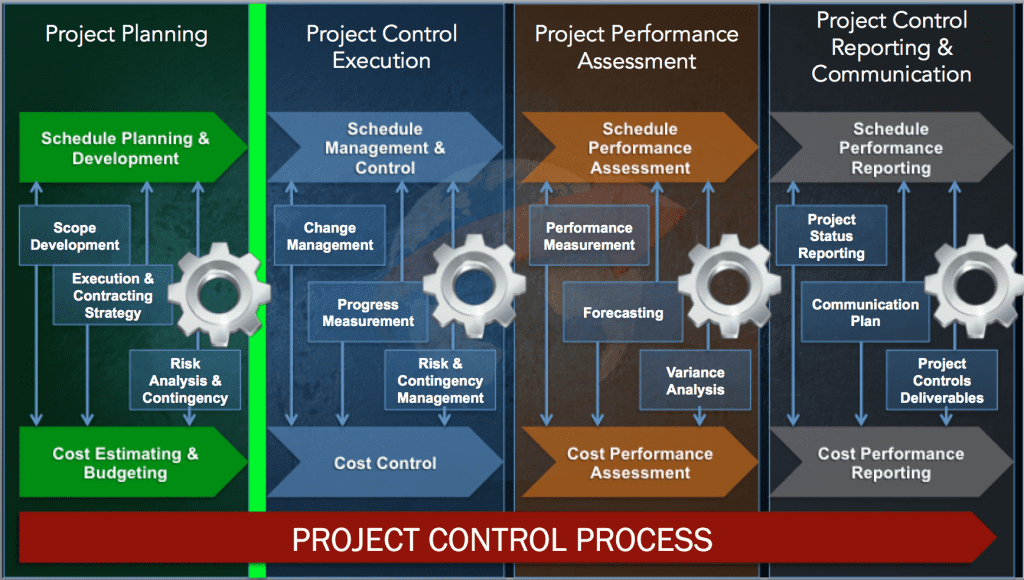Have you ever been assigned to a project and were asked to develop a project related procedure, report, or presentation, but didn’t know exactly how?
Wouldn’t it be easier if you were given the structure and elements of your project report or procedure?
Watch the video below to learn the Project Controls Plan components, so next time you are assigned to develop a Project Controls Plan for your project, you know the structure of your plan and what to cover.
If you don’t know what a Project Controls Plan is, please check another video, entitled “What kind of a plan is a Project Controls Plan.”
Download the free audio mp3 podcast of this episode on iTunes.
Want more training? Subscribe to Project Control Academy to receive complimentary training videos and resources delivered to your mailbox.
Project Control Quotes to Consider: Join Project Control Academy on Instagram for tons of great quotes.
Video Transcript:
Have you ever been assigned to a project and were asked to develop a project related procedure, report, or presentation, but didn’t know exactly how?
Most people, despite their knowledge or expertise, when asked to develop a procedure, document, or presentation, are puzzled at what to talk or write about. There are so many things they have in mind, but don’t know how to properly document it on paper. However, as soon as you give them a structure, the list of titles or components of the report, they quickly start populating the document by filling in the blanks.
I remember once my business unit manager called me to his office. It was a meeting between the business unit manager, safety manager, and me, the Project Controls Manager! I had no idea why I was asked to that meeting with the safety manager! Did I do something wrong?
The business unit manager asked me to help the safety manager to train the entire business unit on the company’s safety procedure!
My first response was, “Thank you for considering me for this initiative, but as you know my expertise is not on safety….”. The business unit manager immediately interrupted me and said, “but you are a great trainer. You can train any topic!”
I was thinking “what?… really?… even a safety topic?”
To make the long story short, in the meeting the business unit manager with the help of the safety manager came up with a nice structure and components of the safety training presentation and gave me the list of subjects along with a 1000 page safety procedure document as a reference document. I had one week to develop the training material.
Did I do it?
You bet! With the list of the topic I was given to cover in the presentation, it was a matter of filling the blanks.
That safety training ended up being one of the best training we had in the company.
The point I am trying to make is that if you know exactly what the components of your report, presentation, or a project procedure are, you can easily compile the information and develop a good document.
In this training, I am not going to show you how to prepare a safety presentation. Instead, I am going to cover the components of a Project Controls Plan, so next time you are assigned to develop a Project Controls Plan for your project, you know the structure of your plan and what to cover in it.
If you don’t know what a Project Controls Plan, I recommend you check another video I developed for you entitled “What kind of a plan is a Project Controls Plan.”
To give you an idea, Project Controls Plan (PCP) is a well-defined Project Controls execution strategy that describes specific processes, procedures, systems, & tools used by the Project Control team throughout the project lifecycle.
According to AACE® International Recommended Practice No.60R-10, the Project Controls Plan is a communication tool for instituting the Project Control process.
Therefore, to figure out the components of a Project Controls Plan and how to assemble this plan, first, we need to understand the project controls process.
Project Controls Process
According to AACE’s TCM framework, an effective project controls process is built upon the PDCA control cycle, which is also known as Deming cycle.
PDCA/ Deming cycle is a method used for the controls and continuous improvement of products and services. It stands for “plan”, “do”, “check”, and “act/assess/adjust.”
The first stage of the Project Controls process is “project planning”. In the planning stage, you plan, define, and develop the scope, time, and cost and evaluate and assess the associated risks. This step is a fundamental step in forming a project baseline.
After having the plan in place and establishing the project baselines, you execute the project controls work by recording and measuring the actual cost and schedule status. This also includes progress measurement, change management, as well as risk and contingency management.
The next stage, which is performed hand-in-hand with the Project Controls execution stage, is project performance measurement and assessment. In this step, you measure & monitor cost and schedule performance against baseline and evaluate the health of your project; whether or not you will finish on time and within budget. After obtaining the performance results, you analyze variances and forecast the project behavior.
Finally, the project status and any recommended corrective or preventive actions will be communicated to the project team members via different project controls reporting and deliverables.
This is the overall Project Controls Process in a nutshell.
The Project Controls Plan should address the same components in the Project Controls process plus the application of tools/software.
Project Controls Plan Components
The following elements need to be addressed in the Project Controls Plan:
Project Planning
Project Scope, Execution, & Contracting Strategy Development:
- A brief description of the project scope of work
- The development & structure of the project WBS
- A brief description of the execution strategy (standard, fast track, shut-down, etc.)
- A brief description of the contracting strategy (self-perform, a prime contractor, multiple contractors, JV…) and how coding structure and systems will be integrated (or mapped)
- The development & organization of the project Control Accounts
Risk Analysis & Contingency:
- Whether formal risk analysis will be conducted for determining the cost and/or schedule contingency and who is responsible for conducting the risk workshop.
- The target cost and schedule probability/confidence levels for contingency
- If time reserve to be applied to the schedule, how it is done.
- The systems/software to be utilized for risk analysis
- The process of recording and maintaining the risk register
Schedule Planning & Development:
- How the project schedule will be developed, validated, and baselined.
- How the schedule basis will be documented.
- The tools used for the planning and development of the schedule.
- The level of details required for the schedules developed during the project, including resource loading & leveling.
- How the resource requirements are determined to support the execution of the project.
- How the master schedule will be compiled and who is responsible for the development and maintenance of the master schedule.
Cost Estimating & Budgeting:
- The established Cost Estimate classification system.
- The class of Cost Estimate at the end of each project development phase.
- How cost estimate basis will be documented.
- How the cost estimate will be developed.
- How the overall project Cost Estimate will be compiled and who is responsible.
- What tools/ software will be used for cost estimating & cost budgeting?
- How the cost estimate will be integrated with the schedule.
Project Control Execution
Change Management:
- The process for managing changes (from initiation to approval, internal/external, project changes vs. contract changes)
- Methods for communicating changes to Project Controls
- Project Controls involvement in assessing the changes in project’s cost and schedule
- How in-scope changes will be managed
- At what point changes will be incorporated into project’s costs and schedule
- The responsibilities of contractors in managing and communicating changes
- Tools/Templates for managing changes
Progress Measurement:
- How physical progress will be measured (methodologies/rules of credit)
- Expectations from the contractors in measuring and reporting the progress
- The interface between schedule control and physical progress measurement
Risk & Contingency Management:
- Who manages the contingency in the project
- When contingency fund can be utilized ( e.g. for “in-scope” changes?)
- How cost contingency and schedule reserve will be allocated/ drawn down
- How risks will be revisited during the project
Cost Control:
- What tool/system/method will be used for managing & controlling the project costs
- How actual costs and expenditures will be collected
- How cost forecasting is performed
- How project costs will interface with the Owner cost accounting system
Schedule Control:
- What tool/system will be used for managing & controlling the project schedule
- How the schedule is updated and maintained
- How schedule variances will be reported
- What is the strategy around re-baselining
- How changes will be incorporated into the schedule
- How resources will be tracked and forecasted
Project Performance Assessment
- How cost and schedule performance will be measured
- What are the acceptable variance thresholds for project’s cost and schedule
- How project’s cost and schedule variances are measured
- How cost forecasting is performed
- How schedule analysis and forecasting is performed
Project Control Reporting & Communication
- The scope, content, format, and responsibilities for the preparation, submittal, and approval of the project reports.
- Project reporting deliverables and frequency of reporting (Project Reporting Calendar)
- Project Controls meeting requirements and frequency of the meetings
- File structure for storing project files and information.
- Project Controls outputs/deliverables, required for the execution & management of the project.
- Tools/systems used for Project Controls reporting.
Please note that a different structure for the Project Controls Plan is proposed in AACE® International Recommended Practice No.60R-10. Make sure that you check it out as well.
Did I overwhelm you with such a big list of items for inclusion in the Project Controls Plan?
Remember, Project Controls Plan doesn’t need to be a lengthy document. It’s better if it is brief and to the point. As long as you are clear on project controls execution strategy that describes specific processes, procedures, systems, & tools used by the Project Control team in the project, you should be fine.
You may need to develop more detailed procedures to support the use and implementation of the Project Controls Plan. Examples are “schedule development & maintenance procedure”, “cost management procedure”, “change management procedure”, and so on.
If your organization has already developed Project Controls procedures, it’s a matter of tailoring those procedures according to the needs of your project and documenting your overall Project Controls approach for the project.
Is It Necessary to Develop a Project Controls Plan for a Project?
According to AACE® International RP No.60R-10, the use of a project controls plan is considered a leading indicator for assisting in the success of the delivery of the project.
The time that you invest in developing, documenting, and communicating a robust project controls plan will reduce the project delivery risks and as a result, increases the success of the project execution.
Therefore, any consideration not to develop or implement the project controls plan in whole or portions will introduce a level of risk to the project.
Although it is very important to develop and document a Project Controls Plan, it is NOT enough. There are other requirements that you need to consider for the successful implementation of the Project Controls Plan. This will be covered in the next episode.
For more resources on Project Controls Plan, please check the following resources:
Other Resources on Project Controls Plan:
- Project Controls Plan Components
- Essential Requirements For a Successful Project Controls Plan Implementation
References
- AACE® International Recommended Practice No.60R-10; Developing the Project Controls Plan
- AACE® International Technical Paper OWN.1845; What Is So Important About a Project Controls Plan? – By Stephen L.Cabano & Paul G. Williams
- Guild of Project Controls Compendium and Reference (CaR)- Module 01-3 – Developing The Project Controls Plan
About the Author, Shohreh Ghorbani

Shohreh is a licensed project management professional (PMP) recognized by Project Management Institute (PMI) and holds a Master of Science in Industrial Engineering.
Connect with Shohreh via Facebook, LinkedIn, Instagram, YouTube






![[Free 90-min Masterclass] The Ultimate Leadership Recipe for Project Professionals](https://www.projectcontrolacademy.com/wp-content/uploads/2024/08/4-1024x576.jpg)















